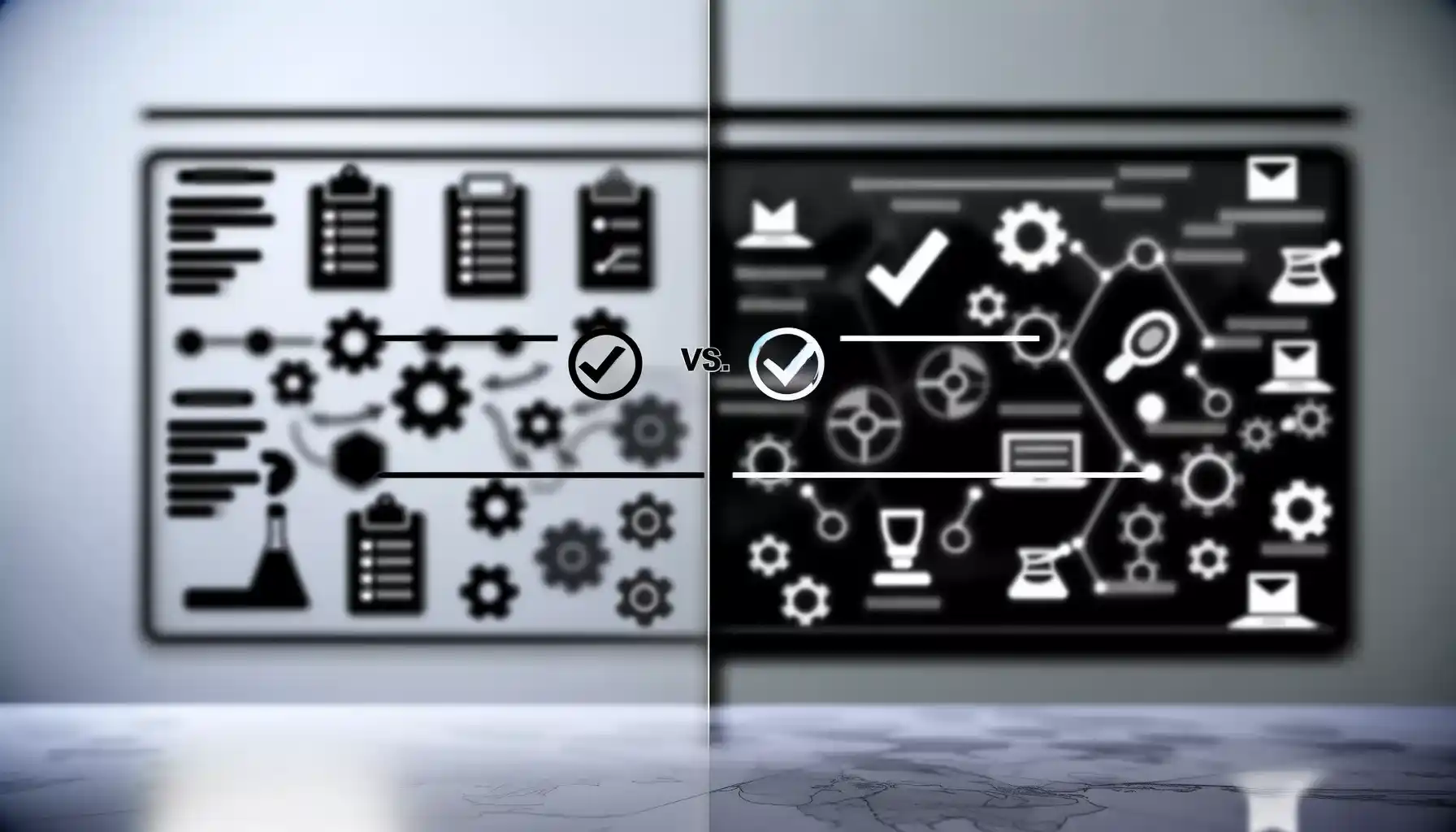Table of Contents
What is Software Quality Assurance?
Software Quality Assurance (SQA) is a comprehensive approach aimed at ensuring the software product aligns with established quality standards. Unlike a singular phase in the software development cycle, SQA operates alongside the entire software development lifecycle, ensuring every component, whether visible to the end-user or not, meets predefined quality benchmarks. This methodical scrutiny extends to every segment of the development process, facilitating early detection of potential issues before they escalate into significant challenges.

From an external perspective, SQA assesses factors such as the software’s performance efficiency, reliability, and the associated maintenance costs. Internally, the focus shifts towards evaluating the software’s architecture, its complexity, how easily it can be read and modified, its testability, and the adherence to best coding practices during development. By meticulously examining both the external and internal facets of the software, SQA aims to guarantee a high-quality product that not only fulfills user expectations but also maintains a standard of excellence throughout its lifecycle.
Principles of Software Quality Assurance
The principles of Software Quality Assurance (SQA) form the bedrock of its methodology, emphasizing a proactive and holistic approach to software development:
- Prevention over Detection: This principle advocates for identifying and mitigating potential errors in the early stages of development. By focusing on preventive measures, it minimizes the need for corrections later, saving time and resources.
- Comprehensive Quality Management: SQA insists on integrating quality management practices throughout every phase of the software development lifecycle. This ensures that quality is not an afterthought but a fundamental aspect from inception to delivery.
- Continuous Improvement: Embracing a mindset of ongoing enhancement, this principle encourages regular evaluations of processes and outcomes. By learning from past experiences, teams can adapt and refine their approaches, leading to higher-quality outputs over time.
- Customer Focus: Central to SQA is the commitment to fulfilling and surpassing customer expectations. This customer-centric approach ensures that the software not only meets technical standards but also delivers a satisfactory user experience.
Implementing Software Quality Assurance
Implementing Software Quality Assurance (SQA) is a structured approach that requires synchronization with the software development lifecycle.
- Define Quality Standards: Begin by identifying the relevant quality standards for your project. This includes both industry-specific benchmarks and regulatory requirements that the software must comply with, ensuring that your product is competitive and compliant.
- Develop an SQA Plan: Craft a comprehensive quality assurance plan. This document should detail the methodologies, tools, and key performance indicators (KPIs) that will guide the SQA efforts, laying the groundwork for consistent quality management.
- Implement Quality Processes: Seamlessly integrate quality management practices into every stage of the software development process, from initial design to final release, ensuring quality is a priority at every phase.
- Training: Equip your team with the necessary knowledge of the defined quality standards and processes through targeted training programs, fostering a culture of quality awareness and compliance.
- Continuous Monitoring and Testing: Implement ongoing testing and monitoring strategies to evaluate the software’s adherence to the set quality standards, facilitating early detection and rectification of issues.
- Feedback and Improvement: Establish a feedback loop with testing outcomes and stakeholder reviews to identify areas for improvement, enabling continuous refinement of the quality processes.

Key Approaches to Software Quality Assurance
Software Quality Assurance (SQA) encompasses a variety of methodologies designed to ensure software meets set quality standards. These approaches include:
- Automated Testing: Employs tools like Selenium for automated execution of tests, assessing if outcomes align with expected results, and streamlining the testing process for repetitive tasks.
- Manual Testing: Relies on human insight to navigate and evaluate the software, identifying defects that automated tools might overlook, particularly in user experience and usability scenarios.
- Agile and DevOps Practices: Integrates SQA into Agile and DevOps frameworks, promoting continuous integration, continuous delivery, and immediate feedback loops, enhancing software quality and deployment speed.
- Static Code Analysis: Utilizes tools to inspect source code for vulnerabilities and quality issues in a non-runtime environment, helping to catch and correct problems early in the development phase.
Importance of Software Quality Assurance
Software Quality Assurance (SQA) holds paramount importance for its pivotal role in:
- Boosting Reliability: It guarantees the dependability of software products, ensuring they function flawlessly and as anticipated.
- Elevating Customer Satisfaction: By delivering superior quality software that aligns with user requirements, SQA significantly enhances user contentment and fosters loyalty.
- Minimizing Costs: Early detection and mitigation of defects through SQA activities drastically cut down the expenses related to rectifying issues at later stages.
- Ensuring Compliance: SQA ensures that software adheres to pertinent industry norms and regulations, thus averting potential legal and financial repercussions.
NASA Software Assurance: NASA’s rigorous SQA processes are crucial in ensuring the safety and success of space missions. Their attention to detail in software development has led to remarkable achievements and the prevention of potential disasters.
Microsoft: Implements extensive testing and SQA methodologies to ensure the reliability and security of its vast range of software products, catering to billions of users worldwide.
Quality Assurance vs. Quality Control
While often used interchangeably, SQA (Quality Assurance) and Quality Control (QC) are distinct:
- Quality Assurance (QA) focuses on improving and optimizing the processes used to develop software, aiming to prevent defects before they occur.
- Quality Control (QC), on the other hand, is about identifying defects in the finished products through testing and inspections. QC is a reactive process, whereas QA is proactive.
In essence, QA is process-oriented, and QC is product-oriented. Both are crucial for delivering high-quality software but focus on different aspects of quality management.

Concluding Thoughts on the Essence and Impact of SQA
Software Quality Assurance (SQA) stands as a cornerstone in the realm of software development, offering a multifaceted approach that spans the entire lifecycle of a project. Its emphasis on prevention over detection, comprehensive quality management, continuous improvement, and customer satisfaction not only elevates the reliability and performance of software products but also significantly reduces costs and ensures compliance with industry standards. By integrating both automated and manual testing strategies, alongside Agile and DevOps practices, SQA fosters a culture of excellence. As the distinction between Quality Assurance and Quality Control highlights, a proactive stance towards quality management is essential for achieving superior software that meets both the technical and user-centric needs of today’s digital landscape.